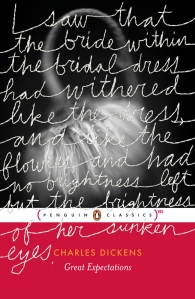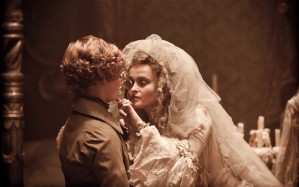By Andrew Jonathan S. Bagaoisan
Television still occupies a comfortable high seat in Filipinos’ media consumption.
They spend more time watching TV than their Asian neighbors, what with the tube reaching 98.8 percent of the entire archipelago—the third widest reach in the world in 2010.
But the same Nielsen survey showed that Filipinos are increasingly watching video in platforms other than TV, beating other countries too. Enter the surge of social media and the accessibility of smart phones.
In 2012, Philippine TV networks continuously tried to adapt to this evolving landscape by finding ways to keep viewers glued even as they held second screens. New players entered the field to meet unaddressed programming needs.
Nostalgia also reigned as old formats and shows were resurrected, while experimenting with new lineups yielded surprise results.
All in all, viewers did not let go, awarding TV its biggest spikes in ratings for some time.
Here are the notable ways Philippine television made a mark on viewers in 2012:
7. BIG BROTHER MEETS THE NEWSCAST

 News footage courtesy of closed-circuit television or CCTV cameras is no stranger to the local newscasts. Being eyewitnesses to crimes, they save investigators time in reconstructing the act from scratch or pinpointing suspects.
News footage courtesy of closed-circuit television or CCTV cameras is no stranger to the local newscasts. Being eyewitnesses to crimes, they save investigators time in reconstructing the act from scratch or pinpointing suspects.
In 2012, the use of CCTVs gained such prevalence that news shows reserved a place for them in their nightly lineups. Segments like “CCTV Patrol” on TV Patrol and “Huli Cam” on 24 Oras became fixtures this year, at times landing top stories when the video is riveting and the news day wanting.
CCTVs are also an expected extension of the video-dependent tabloid TV format Filipinos have been used to.
What’s not to like about CCTVs on TV? For one, they fulfill one TV news value—show the action as it happens—even without a news crew. They show how criminals operate, keeping citizens vigilant. They monitor traffic, saving transmission costs for the TV stations subscribed to their feeds.
Amid the constant presence of crimes in the nightly news, the perceived efficiency of CCTVs in crime-fighting is fueling demand for more of them. Quezon City has already mandated businesses to acquire CCTVs before they could secure business permits.
But the jury is still out on whether CCTVs merely solve crimes already committed rather than also act as crime-deterrents.
Another important aspect of CCTVs hardly discussed is their effect on privacy, with hundreds of them installed by authorities in Metro Manila alone. While officials say the scope of government-monitored CCTVs can only go as far as public places, it might be unsettling for some that the price of security is the metro becoming one giant “Big Brother” house.
6. CURRENT AFFAIRS RETURNS TO AFTERNOONS
The late afternoons once belonged to current affairs, with shows like “Hoy Gising” and “Balitang K” playing hit lead-ins to TV Patrol. GMA 7 had animé , and later newsmagazine “Extra Extra”.
These shows were succeeded by the “guts and glory” block of shows like “Verum Est”, “Mission X” and “True Crime”, before giving way to reality shows and the Asianovela craze in 2003.

T3 hosts Raffy, Erwin and Ben Tulfo (Grab from TV5)
While dramas still dominate the afternoon lineups, 2012 saw the re-entry of current affairs shows to the 5:00 p.m. timeslot.
TV5 began the shift by prefacing their primetime newscast “Aksyon” with “T3”, a live public service show hosted by the Tulfo brothers. On T3, Ben, Erwin and Raffy Tulfo act on tips and reprimand abuses.
The show made noise last year after elder brother Mon Tulfo figured in a brawl at the airport with actress Claudine Barretto. Mon Tulfo’s brothers railed against Barretto and her husband Raymart Santiago on T3, prompting censors to suspend the show.
T3 returned on the air after a week, later airing exclusives such as the viral video of company executive Blair Carabuena berating a traffic enforcer.
 At the end of 2012, ABS-CBN unveiled a weekday current affairs block dubbed “Pinoy True Stories”. Each weekday was a show in itself—docu-dramas featuring aspects of day-to-day issues Filipinos face:
At the end of 2012, ABS-CBN unveiled a weekday current affairs block dubbed “Pinoy True Stories”. Each weekday was a show in itself—docu-dramas featuring aspects of day-to-day issues Filipinos face:
- “Bistado” hosted by Julius Babao resolves abuses and modus operandi.
- “Engkwentro” with Karen Davila goes to the barangay halls where residents sort out fights and scandals.
- “Saklolo” follows Dominic Almelor and Maan Macapagal as they join authorities in rescue operations.
- On “Demandahan”, Anthony Taberna revisits civil suits decided by the higher courts to answer legal questions.
- “Hiwaga” with Atom Araullo probes the paranormal.
The new generation of daytime public affairs is more fast-paced and reliant on the latest docu-style cinematography. Yet the shows touch on the same gritty issues and still reinforce the image of media as the public’s last resort.
But if the ratings are any indication, viewers have yet to prefer these real-life dramas over the afternoon soap operas.
5. SHAKE-UPS AND REVIVALS
Public affairs shows were not the only ones being overhauled in 2012.
The TV networks ditched other long-standing program lineups to revitalize stagnant viewership. Along with that, they thought it timely to resurrect hit shows from the past.

GMA 7 reshuffled its weekend public affairs shows, moving its Saturday night stalwarts “Kapuso Mo, Jessica Soho” and “Imbestigador” to Sunday. Friday offering “Tunay na Buhay,” which already aired way after midnight, took “Imbestigador’s” place.
To fill the slot left by “Kapuso Mo,” GMA brought back its former weeknight drama anthology “Magpakailanman,” hosted by news anchor Mel Tiangco. The show again goes head to head with ABS-CBN’s “Maalaala Mo Kaya”, which it had once beat in the ratings game.
Reality TV pioneer “Extra Challenge” also returned as a weekend program on GMA. The show reshaped primetime programming in 2004, but later bowed out to “Pinoy Big Brother”, another reality show.
TV5, meanwhile, revived the ‘90s daytime telenovela “Valiente” for primetime. Unlike its predecessor that extended five years, the new “Valiente” ran only a few months.
 On Channel 2, vintage episodes of “Maalaala Mo Kaya” were re-aired as “MMK Klasiks” on the weekday afternoon block.
On Channel 2, vintage episodes of “Maalaala Mo Kaya” were re-aired as “MMK Klasiks” on the weekday afternoon block.
But the ultimate nostalgia trip of 2012 is the launch of new cable channels Jeepney TV and FOX Filipino.
FOX Filipino features defunct drama series and newsmagazines from recent years, among them the GMA 7 adaptation of “Marimar” and “Pinoy Abroad”.
Jeepney TV’s lineup is filled with reruns of past ABS-CBN shows and specials. Top draws are classic sitcoms like “Home Along Da Riles” and “Abangan ang Susunod na Kabanata” that are now a rarity on Philippine TV.
(Do you agree with this list or have your own idea of 2012’s top TV trends? I’d love to know your thoughts in the comments section.)
——————
Related 2012 Yearenders online:

• This blog’s Most-visited posts for 2012

• ABS-CBNnews.com’s Top stories for 2012

• CMFR’s “The year that was in the news media”
• New players in the media landscape
 • The big news in TV news for 2012, according to MediaNewser Philippines.
• The big news in TV news for 2012, according to MediaNewser Philippines.


































